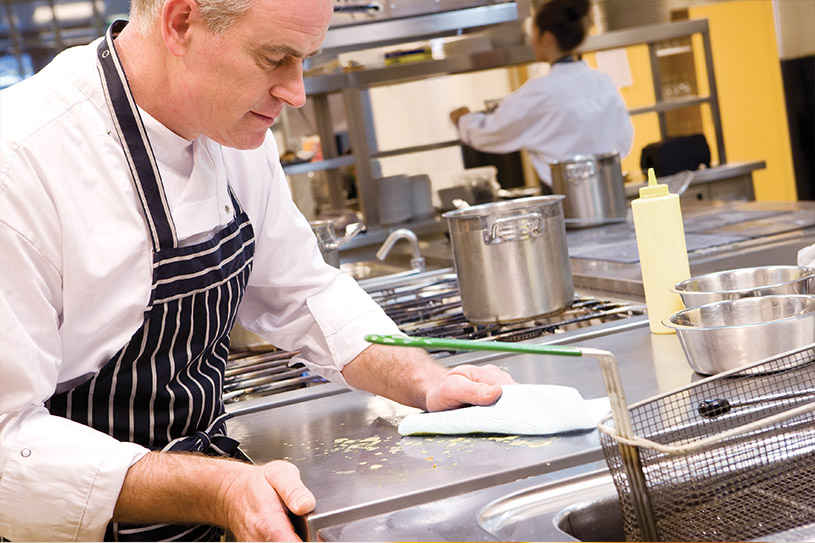Foodservice on the move

Foodservice businesses come in all shapes and sizes. From fast food chains to family-run eateries, diners to canteens, eat in or take away, people want to eat in many different ways. All foodservice businesses are subject to a broad set of regulations. The particular setup of your foodservice business shouldn’t affect your ability to run a clean, efficient and food-safe kitchen though.
The Institute for Justice in the US recently published a report (http://ij.org/street-eats-safe-eats) claiming that food trucks and carts don’t receive higher numbers of citations for health and/or safety violations than more conventional restaurants. The study suggested, in fact that they are the subject of fewer violation reports than restaurants in a number of the cities assessed by the organisation.
Data were collected through part or all of 2012 in seven cities: Boston, Las Vegas, Los Angeles, Louisville, Miami, Seattle and Washington DC. Data from Boston and Louisville was gathered through July 2013. The institute reviewed over 260,000 inspection reports across the seven cities. Controls for factors such as variations in traffic or greater frequency of inspections were applied (see full methodology here (http://ij.org/street-eats-safe-eats-methods)).
The organisation, a civil liberties law firm, undertook the research as part of a wider campaign called The National Street Vending Initiative. The foodservice industry as a whole is unlikely to make any sweeping conclusions or generalisations on the back of this single, specific study in US cities. What the report shows, however, is that foodservice businesses of all kinds are keenly addressing the issue of food safety.
As owners of food trucks and mobile foodservice stations know, such setups are more than capable of providing a safe and hygienic atmosphere for the production of high-quality food. And just because the food prep is taking place in less ‘conventional’ surroundings than a restaurant kitchen, doesn’t mean standards should necessarily be any different. Space may often be at a premium, but a smart allocation of areas for different foodstuffs and stages of the food prep processes, as well as a more select repertoire of dishes, can avoid any problems. And convenient access to required cleaning materials, such as cloths and wipes, can even be improved in such circumstances, providing they are clearly marked and readily available.
It should be clear from the good examples of foodservice in various setups that high standards of food safety and hygiene are attainable far beyond the ‘conventional’ kitchen setup. Smart use of space, clearly organised, with convenient access to cleaning products, are the essential ingredients to transform all kinds of food prep situations to high levels of food safety.

